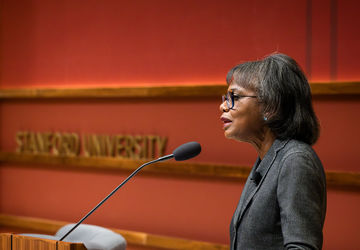How Women’s Oral History Collections Reveal the “Silent” History of Sexual Violence

Estelle Freedman
In the last decade, increasing numbers of women have spoken out about sexual violence in public forums. As a historian, Estelle Freedman, a Clayman Institute faculty research fellow and the Edgar E. Robinson Professor in United States History, wanted to know how often women had vocalized their experiences of sexual violence in the past. “Do we assume silence until these [contemporary] movements?” Freedman asked. “What about in interviews, did women talk about sexual violence in narratives and if so, what language did they use? What meanings did they attribute to it? And how did those terms and meanings change over time and by demographic groups, regions, and other categories?” Freedman presented about her project at a recent Clayman Institute lunch event for faculty research fellows.
In her book Redefining Rape: Sexual Violence in the Era of Suffrage and Segregation, Freedman used a broad array of late 19th and early 20th century newspaper sources and legal cases to study several movements that transformed the meaning of sexual violence and expanded definitions of who could be a victim and who an assailant. In her current research, Freedman explores new methodological approaches to the history of sexual violence. Examining interview transcripts housed by dozens of women’s oral history projects, Freedman asks: “What can the analysis of digitized women’s oral histories contribute to our understandings of the history of sexual assault and harassment and to contemporary responses to sexual violence?”
“What about in interviews, did women talk about sexual violence in narratives and if so, what language did they use? What meanings did they attribute to it? And how did those terms and meanings change over time and by demographic groups, regions, and other categories?”
Even with this array of search terms, some references to sexual violence escaped the data scraping tools Freedman and her team set up. For example, one of the most poignant interviews Freedman examined was a clip she labeled, “I was able to handle it,” an oral history with an older woman whose boss propositioned her for sex while she was a 17-year-old working at Moffett Field building aircraft during World War II. Freedman and her team only found “I was able to handle it” during an initial qualitative sweep that involved listening to each interview. This example illustrates the challenge of searching for references to a problem many women were taught to handle on their own or to sweep under the rug.

(Photo by CoWomen on Unsplash)


